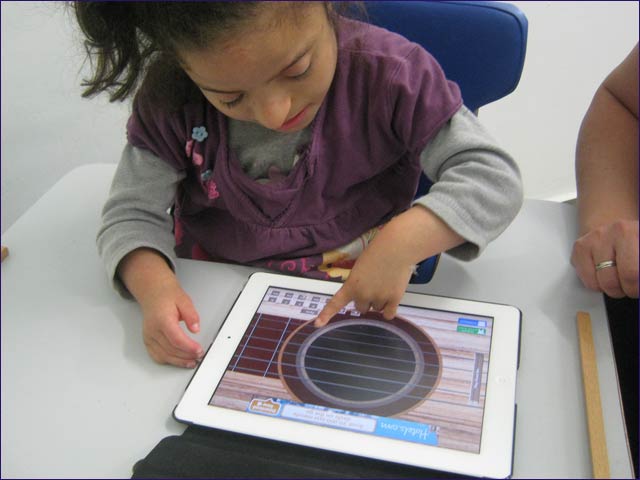By Avigayil Kadesh
Kids who have intellectual disabilities along with physical limitations such as cerebral palsy ordinarily cannot experience simple childhood pleasures like picking flowers and popping bubbles.
But thanks to therapeutic virtual reality (VR) pioneered at ALEH -- Israel's largest network of facilities for children with severe cognitive and physical disabilities -- they can reap the physical and emotional benefits of interacting with a simulated environment where handicaps are irrelevant, unlike in actual settings when the children are taken on field trips.
“Virtual reality is a technology that provides environments our students unfortunately cannot take part in on a regular basis because of accessibility or safety issues -- for example, snow, stars, the beach, a balloon launch, or anything else you can think of,” says Yael Press, the occupational therapist (OT) who tailored advanced Israeli VR technology for patients at ALEH’s Moriah facility in Gedera.
“Research shows that virtual reality is more successful than standard approaches in motor and cognitive treatments because the simulated activities are perceived by the brain as real,” she says.
“This is a very hot topic in areas such as stroke rehabilitation, and now we are pioneering it with people who have intellectual and developmental disabilities. This was something that was invented for entertainment, and we adapted it to our population as a therapeutic tool.”
Unique to Israel
Using a system developed in Israel for the 2004 Olympics in Greece, lifelike images are screened onto the floor or the wall.
“For the cognitively disabled population, the use of VR through this system is innovative, challenging and relatively little researched,” says Press, who piloted her approach with 20 Moriah residents with medium to severe intellectual and developmental disabilities, ranging in age from seven to 30.
The colorful graphics and rich sound make the environments enveloping and interactive for residents lying on a white mat or sitting at a wheelchair outfitted with a white tabletop.
“Often I like to integrate real items to be used when working with the system – for example, shells for an ocean scene. The items are strewn on the ground and the user is asked to gather or sort them. This adds an additional dimension to the activity.”
Since introducing her innovation at Moriah less than two years ago, Press has hosted therapists from other Israeli institutions to train them in the technique, but it remains unique to Israel as far as she knows.
Press also is an OT consultant to the health services department of the Israel Social Affairs and Social Services Ministry’s division for developmental and intellectual disabilities.
“Moriah is very advanced in technology,” Press continues. “We do the virtual reality treatments in a special room where the whole floor becomes a virtual environment. The company that makes the machinery taught our staff how to use it, but we built the therapeutic protocols ourselves because this technology was not developed for people with special needs. It is mostly used in interactive exhibitions and advertising.”
The best technology for each treatment plan
Moriah, one of ALEH’s four residential centers, cares for 100 people from age six to 30. The southern Israeli campus includes a new special-education school and a separate program for young adults.
Press says the center is unusually advanced in its embrace of new tech toys, such as Sony PlayStation 2 EyeToy and the iPad tablet computer, for therapeutic purposes.
“The advantage of iPad is that it’s very available,” says Press. “We can use it with people in wheelchairs because it’s small and portable so we can put it on their wheelchair table. The children like it very much and it is very intuitive -- you don’t need to explain how to use it.”

A child at ALEH Moriah in Gedera using an iPad on her wheelchair table The iPad’s touch screen and built-in camera lets students easily take pictures of their surroundings and activities to share with families at home. Various communication apps enable people who cannot speak to show therapists, friends and staff what they want, and other apps assist with tuning fine motor skills such as handwriting.
The results can be significant. One little girl, Einat, had difficulty understanding colors and shapes until an iPad app helped her copy a picture of a house – down to the roof tiles and windows. Her OT used the iPad to e-mail the picture to Einat’s family, who live in northern Israel and don't get to see her regularly. Einat’s father used the iPad's Skype app to tell his daughter how proud he was of her accomplishment.
Einat has continued communicating with her parents on a regular basis, sending them photos and video messages in real-time.
“We also have the traditional technology of adaptive computers, which have a touch screen with switches and an adaptive mouse,” says Press.
Press stresses that technology is always tailored to each patient’s particular abilities, disabilities, needs and interests. And it’s available on “off” hours, too, so the residents can use the technology to help fill their time with fun activities.